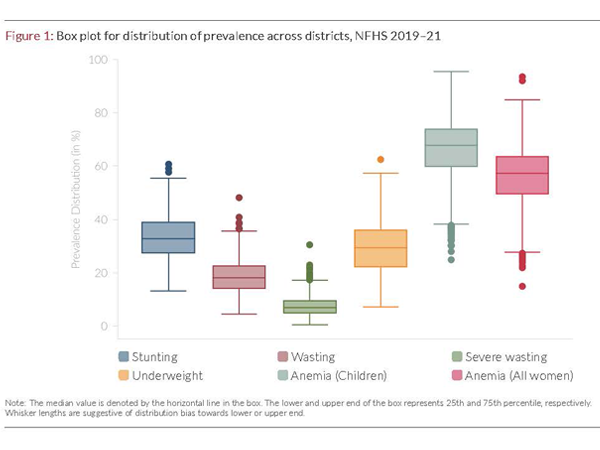The government of India has invested in programmes to help the states and districts achieve performance goals set to address everything from health issues (such as reducing anemia, stunting and low birth weight) to issues around gender inequity and women’s empowerment through education. But how can it be determined if India’s districts are achieving these goals?
Now, a new policy brief series produced by India Policy Insight‘s team helps shed light on the progress and persistent challenges faced by Indian states and districts as they strive to attain their performance goals.
Using NFHS-4 and NFHS-5 data from the NFHS Policy Tracker for Districts, these concise 4-page briefs (formatted as downloadable PDFs) present an overview of key performance indicators (KPIs), grouped and analyzed around the following five national programmes currently sponsored by the Government of India:
- Anemia Mukth Bharat (AMB): aims to reduce anemia prevalence to 32% nationwide by 2022
- Beti Bachao Beti Padhao (BBBP): focuses on gender inequity, disparities in female child survival, and women’s empowerment through education
- Intensified Mission Indradhanush (IMI): aims to achieve more than 90% child immunization against vaccine-preventable diseases
- POSHAN Abhiyaan: aims to reduce stunting, undernutrition, anemia, low birth weight, and malnutrition in children, pregnant women, and lactating mothers
- Pradhan Mantri Matru Vandana Yojana (PMMVY): provides direct financial subsidies to pregnant lactating women to tackle the problem of undernourishment in women
According to the team of researchers who produced the insights series,
“…these analyses provide a new KPI Index of state and district rankings designed to facilitate a rapid review of these five programmes to date and to promote greater awareness of these initiatives across India’s states and districts.”
